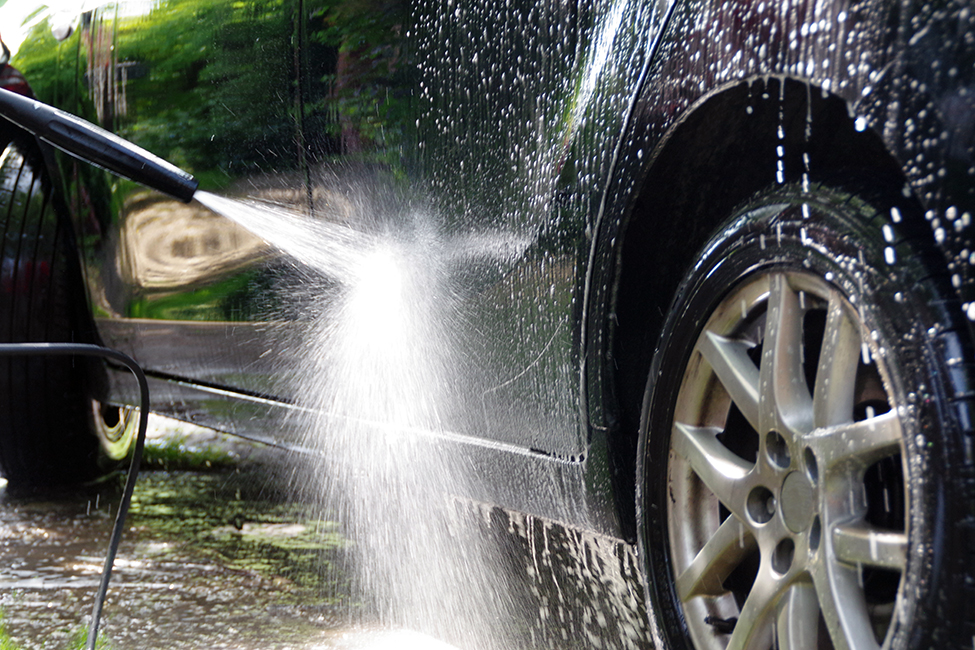Manual, automatic or high-pressure washing: which one to choose?
Manual, automatic or high-pressure washing: which one to choose?

©Alicja Warguła/iStock
Water consumption, respect for paintwork, required time, final result: each method for washing your vehicle has its advantages and limitations. Let's take a look at the different ways of cleaning a vehicle and its various characteristics, so everyone can make an informed choice.<br />
Automatic washing: quick and easy
The traditional rollers, available in all car washes, have evolved considerably. Today, it is possible to choose from a wide range of programmes, from basic washing to thorough cleaning with drying and polishing. Convenient, fast and inexpensive, this method of car care is favoured by a large number of motorists. But what about its effectiveness and environmental impact?
Firstly, while the old nylon fibre rollers caused micro-scratches, the current models (made of foam, felt or microfibre) are more gentle on the paintwork. Secondly, there 1992 Water Act put an end to the uncontrolled dumping of wastewater, which avoids pollution from micro-particles and detergents. Regulations around wastewater require that pollutants do not make their way into the water supply. Not all old facilities are up to standard, but the most recent ones are perfectly up to the required standards. However, in terms of water consumption, this automatic type of washing is greedy (average around 100 to 300 litres per vehicle). There are many good practice guidelines for commercial car washes. You must remove the antennas, fold down the mirrors and put the windscreen wipers up in position before washing in an automatic car wash.
Manual washing with or without water: two very different techniques
Traditional power washing, as it was practised a few years ago, is becoming less common. In addition to consuming a significant volume of water (up to 400 litres for each wash), this method has its constraints: it is prohibited during periods of restrictions and, like all scrubbing, it presents the risk of scratching the bodywork. Finally, the wastewater is discharged without control, in drainage systems that are not always adapted, or even directly into the ground, which has a negative impact on the environment.
For some years now, so-called “waterless” washing has been developing. Two methods are grouped under this term: the no-rinse wash, which requires the use of about one bucket of water, and the waterless process. The waterless method uses specific products that are applied with a microfibre cloth. This method is very environmentally friendly but has the disadvantage of being time-consuming and insufficient for a really filthy vehicle.
High-pressure washing: a good compromise
Often offered at car washes, this cleaning method has many advantages. The first advantage: despite the apparent force of the jet, the fact is that high-pressure washing is the least damaging to varnish and paintwork. Indeed, there is no direct friction, and the pressure alone is not dangerous for the bodywork, provided that a certain distance is maintained! The second advantage is that water consumption is much lower than with other cleaning methods. Depending on the programme chosen, a high-pressure wash consumes between 50 and 150 litres of water. A final positive feature is that the nozzle can reach all surfaces, unlike rollers or manual washing. On the other hand, high-pressure cleaning requires a little effort and time, as well as the necessary skill to avoid getting wet!
Whether at home or the garage, with a hose or rollers, washing your car is part of what you need to do to keep your vehicle in good condition. It’s up to each individual to choose the cleaning method that meets their requirements and expectations.
Feel like getting away from it all?
See our suggestions for novel trips and must-see places to visit near your home or holiday destination.